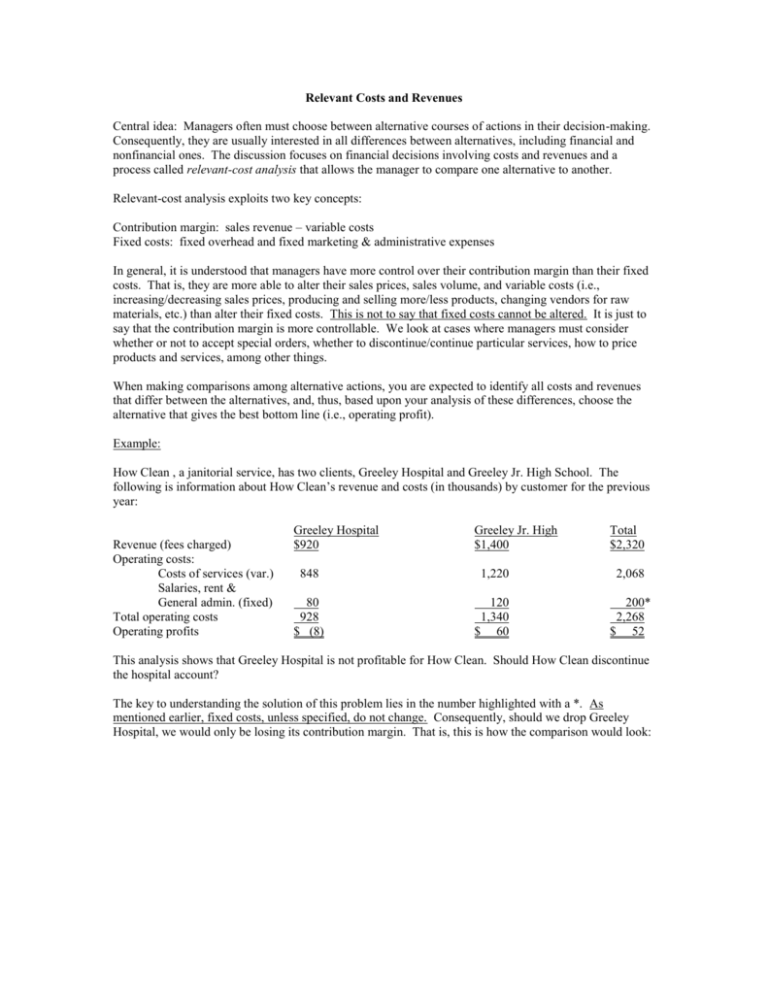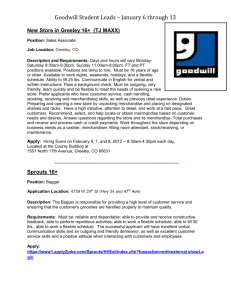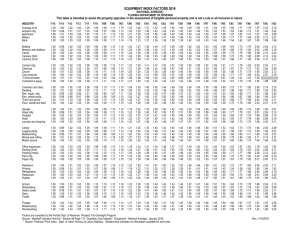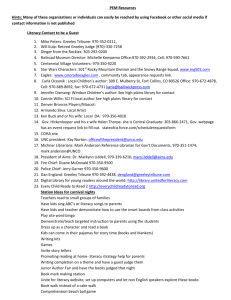Relevant Costs and Revenues Notes
advertisement

Relevant Costs and Revenues Central idea: Managers often must choose between alternative courses of actions in their decision-making. Consequently, they are usually interested in all differences between alternatives, including financial and nonfinancial ones. The discussion focuses on financial decisions involving costs and revenues and a process called relevant-cost analysis that allows the manager to compare one alternative to another. Relevant-cost analysis exploits two key concepts: Contribution margin: sales revenue – variable costs Fixed costs: fixed overhead and fixed marketing & administrative expenses In general, it is understood that managers have more control over their contribution margin than their fixed costs. That is, they are more able to alter their sales prices, sales volume, and variable costs (i.e., increasing/decreasing sales prices, producing and selling more/less products, changing vendors for raw materials, etc.) than alter their fixed costs. This is not to say that fixed costs cannot be altered. It is just to say that the contribution margin is more controllable. We look at cases where managers must consider whether or not to accept special orders, whether to discontinue/continue particular services, how to price products and services, among other things. When making comparisons among alternative actions, you are expected to identify all costs and revenues that differ between the alternatives, and, thus, based upon your analysis of these differences, choose the alternative that gives the best bottom line (i.e., operating profit). Example: How Clean , a janitorial service, has two clients, Greeley Hospital and Greeley Jr. High School. The following is information about How Clean’s revenue and costs (in thousands) by customer for the previous year: Revenue (fees charged) Operating costs: Costs of services (var.) Salaries, rent & General admin. (fixed) Total operating costs Operating profits Greeley Hospital $920 Greeley Jr. High $1,400 Total $2,320 848 1,220 2,068 80 928 $ (8) 120 1,340 $ 60 200* 2,268 $ 52 This analysis shows that Greeley Hospital is not profitable for How Clean. Should How Clean discontinue the hospital account? The key to understanding the solution of this problem lies in the number highlighted with a *. As mentioned earlier, fixed costs, unless specified, do not change. Consequently, should we drop Greeley Hospital, we would only be losing its contribution margin. That is, this is how the comparison would look: Revenue Operating Costs: Cost of svcs. (var.) Salaries, rent, and Gen. Admin. (fixed) Total oper. Costs Operating profits How Clean’s Present Condition (i.e., Status Quo) How Clean’s condition should it discontinue the hospital $2,320 $1,400 2,068 1,220 200 2,268 $ 52 200* 1,420 $ (20) Based upon this analysis, How Clean should then continue providing services for Greeley Hospital. A quicker way to have come to the same decision would have been to examine explicitly only the contribution margins and fixed costs. Be mindful, unless otherwise explicitly stated, fixed costs generally will not change. Contribution margin Fixed costs Operating profit How Clean Status quo $252 ($2,320-$2,068) 200 $ 52 How Clean when Discontinuing hospital $180 ($1,400-$1,220) 200 $ 20 Similar processes are used when considering special orders. Consider the following example: Torous Company makes paper shredders for government officials. Data from the forecasted income statement for the year before any special orders are as follows: Sales Revenue Manufacturing Costs Gross profit Marketing costs Operating profit Amount $8,000,000 6,400,000 1,600,000 600,000 $1,000,000 Per Unit $20.00 16.00 4.00 1.50 $ 2.50 Fixed costs included in this forecasted income statement are $2,800,000 in manufacturing costs and $200,000 in marketing costs. These costs are not affected by a special order offering to buy 50,000 shredders for $13 each. Torous has enough idle capacity to process this order. What impact would accepting the special order have on operating profit? Again, remember we are looking at two key items- contribution margin & fixed costs. Thus, by accepting the special order, we would expect the following: Affect on Total CM: Sales $ $13 Variable mfg/unit 9* (note: did not include var. mktg. because it’s a special order) $ 4 x 50,000= $200,000 Gain Affect on Fixed costs: Author does not specify any change, thus, $0 Consequently, operating income will increase by $200,000 and, thus, should accept special order *I determined var. mfg/unit by: 1) computing 400,000 units sold: $8,000,000 total sales revenue $20 unit sales $ 2) computing $3,600,000 total variable mfg. costs: $6,400,000 total mfg. Costs -2,800,000 total fixed costs 3) $3,600,000 tot. var. mfg. costs/400,000 units sold = $9 var. mfg/unit Now, if the author had indicated that, as a result of accepting the special order, fixed costs would have increased by $50, 000, then the impact on operating profit would be: $200,000 Gain in CM - 50,000 Gain in Fixed costs $150,000 increase in operating profit, thus, still accept special order Now, if the author had indicated that, as a result of accepting the special order, s/he would lose 25,000 units of regular sales, then the impact on operating profit would be: $200,000 Gain in CM from the special order (as computed earlier) (250,000) Loss in CM from not being able to sell at regular price: Sales price $20 ($ 50,000) decrease in operating profit - 9 var. mfg/unit - 1 var, mktg. (commissions) $10 unit cm x 25,000 units = $250,000 In such an instance, s/he should not accept this special order. Also note that often when providing analyses of costs, managers may unitize or allocate fixed costs. That is, they will divide the total fixed costs by the number of units or by some allocation method to divisions. Please, however, understand that although, they may do such, that does not necessarily make them relevant costs. That is, in such cases, the key question to ask in deciding whether such costs are relevant is to ask whether the total fixed costs will increase or decrease as a result of the alternative action considered will be undertaken. If not explicitly indicated in some form, the answer is then no. Sunk cost- a cost that has already been incurred (i.e., made in the past) and cannot be changed by present or future decisions. For example, in retailing, once the merchandise has been purchased, its cost is considered a sunk cost and is irrelevant to subsequent decisions (i.e., is not a relevant cost!). The only relevant cost considered to be relevant is marketing & admin, and more specifically, variable marketing & admin.










